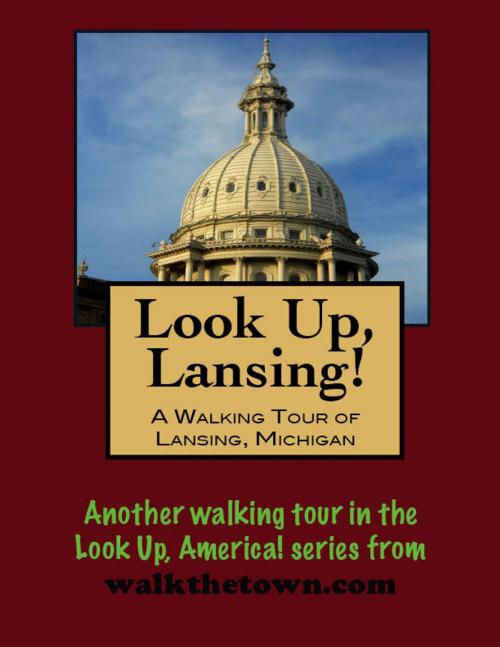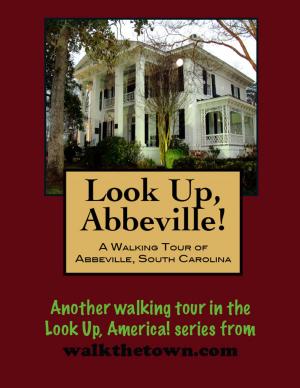Look Up, Lansing! A Walking Tour of Lansing, Michigan
Nonfiction, Travel, United States, History, Americas| Author: | Doug Gelbert | ISBN: | 9781465898821 |
| Publisher: | Doug Gelbert | Publication: | November 20, 2011 |
| Imprint: | Smashwords Edition | Language: | English |
| Author: | Doug Gelbert |
| ISBN: | 9781465898821 |
| Publisher: | Doug Gelbert |
| Publication: | November 20, 2011 |
| Imprint: | Smashwords Edition |
| Language: | English |
There is no better way to see America than on foot. And there is no better way to appreciate what you are looking at than with a walking tour. Whether you are preparing for a road trip or just out to look at your own town in a new way, a downloadable walking tour is ready to explore when you are.
Each walking tour describes historical and architectural landmarks and provides pictures to help out when those pesky street addresses are missing. Every tour also includes a quick primer on identifying architectural styles seen on American streets.
The first capital of Michigan in 1835 was Detroit. But a provision in the state Constitution required that after a period of twelve years the government be moved to a more central location. There were concerns about Detroit being too close to British Canada and subject to invasion like what happened twenty years earlier in the war of 1812. And outside of Detroit there was grumbling about the new state's largest city having too much power if it was the capital as well.
So in 1847 there was jockeying among the likely candidates in the central part of Michigan to be awarded the state capital in the legislature. Ann Arbor was in there pitching. And Jackson. And Marshall. One constituency that wasn't represented was Lansing, where there were less than 20 people living around a sawmill. There was no obvious choice,however, and after months of wrangling an exasperated Michigan House of Representatives picked Lansing. When the decision was announced there was open laughter at the prank. But it was no joke.
The people of Lansing, named by settlers of a Tomkins County town in New York that was named for Revolutionary War hero and legal author John Lansing, readied themselves to be the capital city. Heck, Lansing wasn't even the county seat of Ingham County and it remains the only capital city in America in a county that isn't the county seat. Even with the designation as the capitol of Michigan, the city wasn’t incorporated until 1859, with 3,085 inhabitants. But in those early years Lansing was never sure it would actually stay the capital of Michigan until the legislature set aside over a million dollars to build a new capitol in 1872.
By that time Lansing had developed along three villages: a Lower, the oldest part; an Upper, and a Middle, where the government grew. The government fueled development but Lansing developed an industrial base in its own right. There was dense timber stands to harvest and agricultural implements to build, especially wheelbarrows. But nothing kick-started Lansing like Ransom E. Olds, one of America's foremost automobile pioneers credited with constructing the world's first practical automobile. With Olds building more cars than anyone in the world in the first years of the 1900s, more than 200 manufacturers established themselves in the area. A town that entered the century with 15,000 people entered the Depression 30 years later with 80,000.
As Lansing reinvented itself through the remainder of the 20th century education and healthcare and banking played a larger role in the economy. Few towns have been as active in urban development. An expanding government hungry for land cleared large swaths of homes and suburban exodus and highway construction claimed dozens of more blocks. Few buildings remain that have witnessed it all and many are clustered around the Michigan State Capitol and that is where we will begin our walking tour...
There is no better way to see America than on foot. And there is no better way to appreciate what you are looking at than with a walking tour. Whether you are preparing for a road trip or just out to look at your own town in a new way, a downloadable walking tour is ready to explore when you are.
Each walking tour describes historical and architectural landmarks and provides pictures to help out when those pesky street addresses are missing. Every tour also includes a quick primer on identifying architectural styles seen on American streets.
The first capital of Michigan in 1835 was Detroit. But a provision in the state Constitution required that after a period of twelve years the government be moved to a more central location. There were concerns about Detroit being too close to British Canada and subject to invasion like what happened twenty years earlier in the war of 1812. And outside of Detroit there was grumbling about the new state's largest city having too much power if it was the capital as well.
So in 1847 there was jockeying among the likely candidates in the central part of Michigan to be awarded the state capital in the legislature. Ann Arbor was in there pitching. And Jackson. And Marshall. One constituency that wasn't represented was Lansing, where there were less than 20 people living around a sawmill. There was no obvious choice,however, and after months of wrangling an exasperated Michigan House of Representatives picked Lansing. When the decision was announced there was open laughter at the prank. But it was no joke.
The people of Lansing, named by settlers of a Tomkins County town in New York that was named for Revolutionary War hero and legal author John Lansing, readied themselves to be the capital city. Heck, Lansing wasn't even the county seat of Ingham County and it remains the only capital city in America in a county that isn't the county seat. Even with the designation as the capitol of Michigan, the city wasn’t incorporated until 1859, with 3,085 inhabitants. But in those early years Lansing was never sure it would actually stay the capital of Michigan until the legislature set aside over a million dollars to build a new capitol in 1872.
By that time Lansing had developed along three villages: a Lower, the oldest part; an Upper, and a Middle, where the government grew. The government fueled development but Lansing developed an industrial base in its own right. There was dense timber stands to harvest and agricultural implements to build, especially wheelbarrows. But nothing kick-started Lansing like Ransom E. Olds, one of America's foremost automobile pioneers credited with constructing the world's first practical automobile. With Olds building more cars than anyone in the world in the first years of the 1900s, more than 200 manufacturers established themselves in the area. A town that entered the century with 15,000 people entered the Depression 30 years later with 80,000.
As Lansing reinvented itself through the remainder of the 20th century education and healthcare and banking played a larger role in the economy. Few towns have been as active in urban development. An expanding government hungry for land cleared large swaths of homes and suburban exodus and highway construction claimed dozens of more blocks. Few buildings remain that have witnessed it all and many are clustered around the Michigan State Capitol and that is where we will begin our walking tour...















